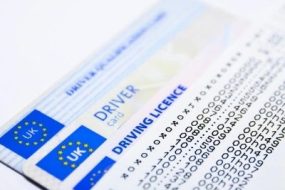
Not everyone on the road drives a car. Some ride on bicycles, skateboards, roller skate shoes, etc. Behaviors of road users should differ according to the kind of fellow users on the road.
How you, as a driver, would treat a fellow driver would be completely different from how you would treat a motorcycle rider, and it will also be different from how you would treat a bicycle rider.
According to the law, when passing a bicyclist you should give them at least four feet of space especially while in motion because any slight miscommunication or misreading will be more fatal to the bicyclist than to your car.
Who is a Bicyclist?
Simply put, a bicyclist is a person who rides on a bicycle. A bicycle is a two-wheeled mode of transportation that is operated manually with the feet of the rider pedaling along. A person who rides and enjoys cycling on this two-wheeled transport.
Just as a driver is a person who drives a car or any other truck, a skater is a person who runs on a skateboard or skating roller, a bicyclist is a person who moves around pedaling on a bicycle.
Can You Pass a Bicyclist When Driving?
Yes, you can pass a bicyclist on the road while driving, however, there is a specific way to pass someone who is riding a bicycle.
When you want to pass a bicyclist, you have to give enough space, so depending on the lane, you should drive to the left, close to the center of the road to pass the bicyclist securely.
Know that you can pass a bicyclist on the road, so you don’t have to always drive behind a bicyclist until he or she turns before you drive on.
Just ensure that you give the bicyclist enough space before passing, to ensure the safety of the vulnerable person.
When Should You Pass a Bicyclist When Driving?
You must ensure that there’s enough road to the left of the bicyclist when you want to pass, and the road is enough to enable you give the bicyclist as much as three or more feet worth of space.
When there isn’t enough space to the left of the bicyclist, it is best you wait until the bicycle turns into another road, or until the road is wide enough to give the bicyclist enough allowance.
Usually, as a driver, when you want to overtake another car, you have to move to the left and remain at a distance safe enough to overtake once there is enough space for your car to fit in.
For a bicyclist, the space needs to be at least three feet from the bicycle, to be considered safe. Especially in motion.
When Passing a Bicyclist You Should?
When passing a bicyclist, you should give them at least four feet of space. For those preparing for a written driving test, the answer is to give them at least four feet of space.
Always note the space between your vehicle and the bicyclist. Before passing anyone riding a bicycle, the space should be no less than three feet between your car and the rider.
The bicyclists are considered a lot more vulnerable than drivers of cars or other vehicles, because they don’t have as much protection as cars, and they require a lot more focus as they are doing everything manually.
If a bicyclist gets into an accident, or there is a collision involving a car driver and a bicyclist, the accident will be a lot more fatal for the bicyclist, and might not even get a scratch in on the driver, or even the car.
For this reason, bicyclists, on the road are collectively protected by being given enough allowance and space on the road. When you want to pass a bicyclist, you should consider their vulnerability and give them at least three feet of space before you pass.
Also, you must not Overspeed when driving past a bicyclist. Ensure that you are at a safe speed. If you speed past a bicyclist, you will be pushing them off the road unconsciously and they might collide into a parked or safe area. So always drive carefully when passing a bicyclist.
You might find yourself in a situation where there is a vehicle coming ahead when you want to pass a bicyclist. It is wise to let the vehicle pass first before passing the bicycle because you need all the space you can get, and passing simultaneously with another vehicle won’t afford the space needed for the bicycle.
If you have to, to ensure the safety of the bicyclist, and also your safety, change lanes from the bicycle, if you can.
What is the Safest Way to Pass a Bicyclist?
The safest way to pass a bicyclist is to give the bicyclist a space or allowance of at least three feet, and that three feet space must be preserved until you have successfully passed the bicyclist safely.
Have it at the back of your mind that the bicyclist is a lot more vulnerable and should be protected. Give enough space, and maintain a slow speed until you are well past the bicyclist.
Tips to Know When Passing a Bicyclist
Here are some tips to know when you are passing a bicyclist while driving;
1. Maintain a Space of at Least Four Feet
This is to ensure that the bicyclist is protected. If you drive too close to the bicycle, the rider might be forced to the walkway, hit pedestrians, or even parked cars.
2. Reduce Your Speed
Know your speed limit when passing a bicyclist. You should reduce your speed when driving past a bicyclist as they are more vulnerable, and might become apprehensive when sped past and apprehension is an ingredient for a looming road accident.
4. Always Check Your Blind Spots
Especially when turning, and you know there is a bicyclist beside you. Ensure you’re more careful, and check your blind spots.
Avoid the bicycle lane as much as you can: Sure, you can’t keep off the bicycle lane, especially when you want to turn, however, ensure that you aren’t on the lane for more than 200 feet before negotiating turns.
Be cautious and protective of bicyclists.
Conclusion
As a driver passing a bicyclist, you should be extra careful, don’t go too close to the bicyclist. Give at least a space of three feet to the bicyclist, because they have less protection than you do.
You should be considerate of the bicycle riders, know they are vulnerable, and don’t drive in a way that will cause apprehension for them. Don’t this will ensure safety for everyone.









